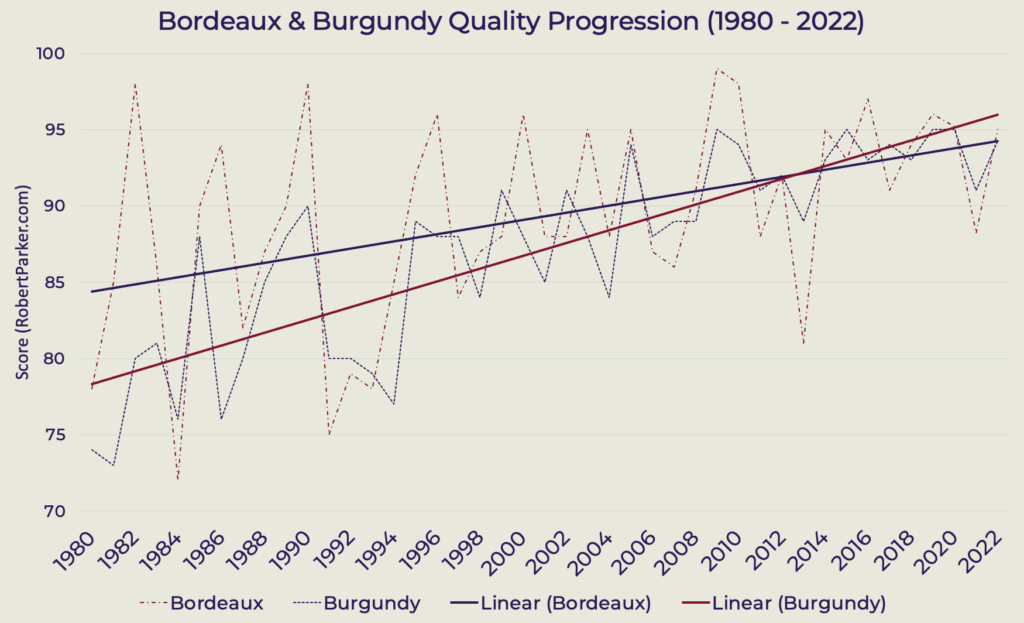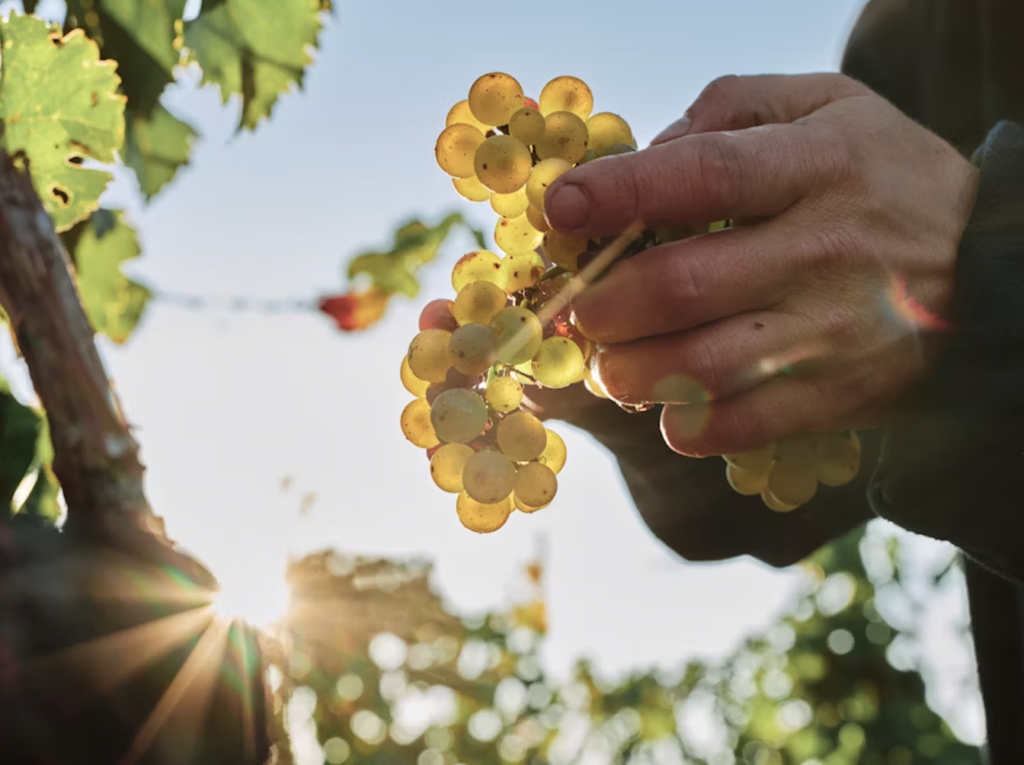We can’t say it enough: the wines produced over the past two decades are the finest humanity has ever crafted. They are the culmination of centuries of know-how combined with cutting-edge technology, growing investments, and an ever-deeper understanding of Nature.
Recipe
It all begins with Mother Nature. Without diving into viticultural jargon, five climate elements are key: an early, even flowering; a touch of water stress in summer to concentrate flavours; vines allowed to focus their energy on ripening fruit rather than growing leaves; a healthy canopy to support full maturity; and finally, a sunny, dry harvest to ensure pristine, healthy grapes.
Yet, nature alone doesn’t make a great vintage. It takes a vigneron’s intuition and precision: the ability to read the season, adapt to its rhythm, and make the right choices at the right time. Excellence comes at the cost of meticulous, labour-intensive work which demands both time and significant investment – a true partnership between Man and Nature.
Looking Back
Between 1980 and 2000, famous wine critic Parker’s average critic score stood at 87 for Bordeaux and 83 for Burgundy. From 2001 to 2022, both regions averaged 92, which is a remarkable leap and reflects the evolution of winemaking practices and climate conditions alike (see figure below).
To illustrate, we regard Bordeaux’s 2016 vintage (rated 97) as the new modern quality benchmark which embodies near-perfect conditions. Following a wet winter and a cool spring, a long stretch of dry, sunny weather from mid-June enabled the grapes to achieve complete ripeness, resulting in wines of exceptional balance, structure, freshness, and ageing potential. By contrast, 2013 (scoring just 81, the lowest since 1993) proved far more challenging. A cold, rainy spring delayed flowering and caused uneven ripening, while rain during harvest further reduced yields and consistency. These conditions served as a pertinent reminder that however advanced our know-how, Mother Nature always has the final word.

Insights on 2025
Following recent visits to Burgundy and Bordeaux and discussions with winemakers, our team returned with encouraging insights into the 2025 vintage: low yields but outstanding quality.
In Bordeaux, a warm, dry winter led to an early start, with budding, flowering and véraison all ahead of schedule. Intense August heatwaves above 35°C and scarce rainfall persisted until late August and September. Harvest began exceptionally early. Château Lafleur in Pomerol started its Merlot on 26 August, which is its earliest on record and 10 days ahead of the norm. Yields are estimated 15% below a 5-year average, with small, thick-skinned berries producing deeply coloured, concentrated wines. Despite the heat, the very best wines show early signs of freshness and balance.
But one theme dominated our conversations across both regions: climate change. With France recording its third-hottest August ever and Bordeaux breaking temperature records, 2025 adds another remarkable – but telling – chapter to the story of modern viticulture. For collectors and enthusiasts alike, these wines will bring more than pleasure, they’ll represent a piece of history. Those wishing to secure these rare expressions of craftsmanship, born within a fleeting golden period of Nature, would be wise to act while they still can.

